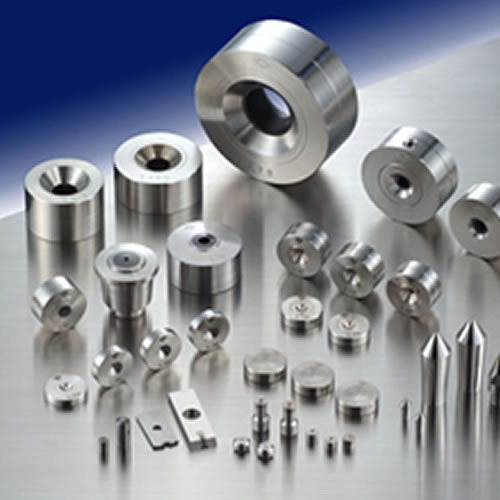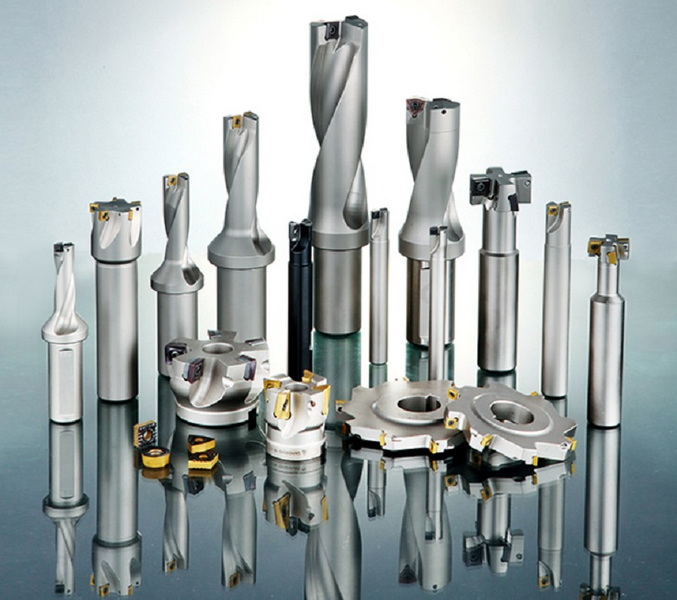Content Menu
● Introduction to Tungsten Carbide Coatings
● Causes of Scratches on Tungsten Carbide Coatings
● Methods for Removing Scratches
>> 1. Cleaning and Basic Polishing
>> 2. Advanced Polishing Techniques
>> 3. Re-coating
● Considerations for Removing Scratches
● Techniques for Enhancing Polishing Efficiency
>> Oscillatory Motion Technique:
● Tools and Materials Needed
● Advanced Tools for Precision Polishing
>> Ultrasonic Polishing:
● Preventive Measures
● Case Studies: Successful Scratch Removal
>> Example from Aerospace:
● Conclusion
>> FAQ
>> 1. What causes scratches on tungsten carbide coatings?
>> 2. How do I remove minor scratches from tungsten carbide?
>> 3. What techniques are used for advanced polishing of tungsten carbide?
>> 4. When is re-coating necessary for tungsten carbide coatings?
>> 5. How can I maintain the longevity of tungsten carbide coatings?
● Citations:
Tungsten carbide coatings are renowned for their exceptional hardness and wear resistance, making them ideal for various industrial applications, including cutting tools, wear parts, and even jewelry. However, despite their durability, scratches can occur, especially when exposed to materials harder than tungsten carbide, such as diamonds. Removing scratches from tungsten carbide coatings requires careful techniques to maintain the integrity and performance of the coated surface. This article will delve into the methods and considerations for removing scratches from tungsten carbide coatings.

Introduction to Tungsten Carbide Coatings
Tungsten carbide coatings are typically applied using thermal spray processes, such as High-Velocity Oxygen Fuel (HVOF) or Detonation Gun (D-Gun) methods. These coatings offer superior hardness and wear resistance, making them suitable for high-performance applications.
Tungsten Carbide Coating Properties:
- Hardness: Tungsten carbide coatings are extremely hard, which provides excellent resistance to wear and abrasion.
- Thermal Stability: They maintain their properties over a wide temperature range, making them suitable for high-temperature applications.
- Corrosion Resistance: Depending on the binder material used, tungsten carbide coatings can offer good corrosion resistance.
Causes of Scratches on Tungsten Carbide Coatings
Scratches on tungsten carbide coatings can occur due to several reasons:
- Contact with Harder Materials: Materials like diamonds or other hard ceramics can scratch tungsten carbide.
- Abrasive Wear: Exposure to abrasive particles or surfaces can lead to scratches.
- Impact Damage: Sudden impacts can cause scratches or chipping, especially if the coating is not properly bonded to the substrate.
Methods for Removing Scratches
Removing scratches from tungsten carbide coatings involves a combination of cleaning, polishing, and sometimes re-coating. Here are some methods:
1. Cleaning and Basic Polishing
For minor scratches or surface marks, cleaning with warm soapy water and a soft cloth may be sufficient. If scratches persist, a mild polishing compound can be used. However, for deeper scratches, professional polishing techniques are required.
Basic Polishing Steps:
1. Clean the Surface: Use warm soapy water to remove any debris.
2. Apply Polishing Compound: Use a mild polishing compound suitable for tungsten carbide.
3. Polish the Surface: Use a soft cloth or a polishing wheel to gently polish the area.
2. Advanced Polishing Techniques
For deeper scratches, advanced polishing techniques involving diamond-based compounds are necessary. These methods require specialized equipment and expertise.
Advanced Polishing Steps:
1. Use Diamond Wheels: Start with a coarse diamond wheel to remove deeper scratches.
2. Progress to Finer Grits: Gradually move to finer diamond wheels or compounds (e.g., 0.5 micron) for polishing.
3. Final Polish: Use a high-quality polishing compound for the final finish.
3. Re-coating
If scratches are severe or the coating is damaged beyond repair, re-coating may be necessary. This involves removing the old coating and applying a new layer using thermal spray techniques.
Re-coating Steps:
1. Remove Old Coating: Use electrochemical methods or mechanical removal techniques.
2. Prepare the Surface: Ensure the substrate is clean and free of debris.
3. Apply New Coating: Use a suitable thermal spray method (e.g., HVOF) to apply the new coating.

Considerations for Removing Scratches
When removing scratches from tungsten carbide coatings, several factors must be considered:
- Coating Integrity: Avoid damaging the coating further during the removal process.
- Surface Finish: Achieve a smooth finish to maintain the coating's performance.
- Cost-Effectiveness: Evaluate whether repair or replacement is more cost-effective.
Techniques for Enhancing Polishing Efficiency
To improve the efficiency of polishing tungsten carbide surfaces, techniques like oscillatory motion can be used. This involves moving the abrasive material in a rapid, oscillating manner to enhance abrasion and reduce the number of passes needed.
Oscillatory Motion Technique:
- Setup: Use an abrasive film with an oscillatory motion mechanism.
- Operation: Move the film rapidly across the surface in an oscillating pattern.
- Benefits: Reduces the number of passes needed and improves scratch removal efficiency.
Tools and Materials Needed
For polishing tungsten carbide coatings, the following tools and materials are typically required:
- Diamond Wheels: Coarse and fine diamond wheels for grinding and polishing.
- Polishing Compounds: Diamond-based compounds for final polishing.
- Soft Cloths: For applying polishing compounds and cleaning.
- Thermal Spray Equipment: For re-coating if necessary.
Advanced Tools for Precision Polishing
In addition to basic tools, advanced equipment like ultrasonic polishers can be used for precision polishing. These devices use high-frequency vibrations to enhance the polishing action, allowing for more precise control over the polishing process.
Ultrasonic Polishing:
- Setup: Use an ultrasonic polisher with a suitable polishing compound.
- Operation: Apply the compound to the surface and activate the ultrasonic vibrations.
- Benefits: Offers precise control and can achieve a high-gloss finish.
Preventive Measures
Preventing scratches is often more cost-effective than repairing them. Here are some preventive measures:
- Regular Inspection: Regularly inspect the coating for signs of wear or damage.
- Proper Handling: Handle coated parts carefully to avoid impacts or abrasion.
- Protective Coatings: Apply additional protective coatings if the part will be exposed to harsh conditions.
Case Studies: Successful Scratch Removal
Several industries have successfully removed scratches from tungsten carbide coatings using the methods outlined above. For example, in the aerospace industry, re-coating and advanced polishing techniques are commonly used to restore critical components.
Example from Aerospace:
- Problem: A tungsten carbide-coated component showed significant scratches after exposure to abrasive particles.
- Solution: The old coating was removed, and a new layer was applied using HVOF. Advanced polishing techniques were then used to achieve a smooth finish.
- Outcome: The component was restored to its original performance specifications.
Conclusion
Removing scratches from tungsten carbide coatings requires careful consideration of the coating's properties and the extent of the damage. By using appropriate cleaning, polishing, and re-coating techniques, it is possible to restore the surface integrity and maintain the performance of tungsten carbide-coated parts. Regular maintenance and inspection are crucial to prevent scratches and extend the service life of these coatings.

FAQ
Here are some frequently asked questions related to removing scratches from tungsten carbide coatings:
1. What causes scratches on tungsten carbide coatings?
Scratches on tungsten carbide coatings can occur due to contact with materials harder than tungsten carbide, abrasive wear, or impact damage.
2. How do I remove minor scratches from tungsten carbide?
Minor scratches can often be removed by cleaning with warm soapy water and a soft cloth. If necessary, a mild polishing compound can be used.
3. What techniques are used for advanced polishing of tungsten carbide?
Advanced polishing involves using diamond wheels and compounds. The process starts with coarse grits to remove deeper scratches and progresses to finer grits for polishing.
4. When is re-coating necessary for tungsten carbide coatings?
Re-coating is necessary if the scratches are severe or the coating is damaged beyond repair. This involves removing the old coating and applying a new layer using thermal spray techniques.
5. How can I maintain the longevity of tungsten carbide coatings?
Regular inspection and maintenance are vital. This includes cleaning the surface regularly and addressing any wear or damage promptly to prevent costly downtime.
Citations:
[1] https://patents.google.com/patent/US6171224B1/en
[2] https://vacaero.com/information-resources/vac-aero-training/649-using-thermal-spray-for-repair-of-service-damaged-parts.html
[3] https://patents.google.com/patent/CN104307781A/zh
[4] https://www.zhongbocarbide.com/does-tungsten-carbide-scratch.html
[5] https://shop.machinemfg.com/tungsten-carbide-coating-comprehensive-guide/
[6] https://patents.google.com/patent/CN1754009A/zh
[7] https://www.youtube.com/watch?v=UgGABXmyNL8
[8] http://www.wococarbide.com/Transaction/en_article_info/id/2344.html
[9] https://www.kemet.co.uk/blog/lapping/polishing-tungsten-carbide
















